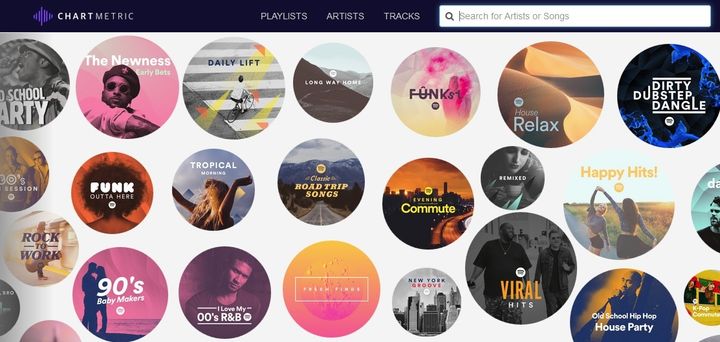
There is a big issue of distrust among musicians towards technology. The majority of independent artists sees technology companies as evils who are trying to rip them off. Additionally, they are skeptical about a machine’s ability to judge a song’s emotional impact and afraid that algorithm-driven economics will kill genuine creativity and individuality.
At the same time, the industry leaders have clearly recognized the value of big data. Over the last years, we’ve seen a series of acquisitions of music intelligence startups made by streaming companies: Spotify bought The Echo Nest and Soundwave, Apple Music bought Semetric (the creator of Musicmetric), and Pandora bought Next Big Sound.
Playlists have become the most vital format for music discovery. Listeners are no longer interested in passive music consumption based on “one size fits all” rule. They are looking for custom solutions and tailored recommendations.
So far, Spotify has been ahead of the game. By using advanced computer algorithms, it is capable of making personalized suggestions to their customers. Their Discover Weekly feels like a mix-tape of new songs made just for you.
On the other hand, the company has become a huge data aggregator. By analyzing their listeners' choices, it can predict future demand. In fact, Spotify users generate 600 GB of data daily, and it has a huge value on its own.
Now, streaming giants not only can predict which song or an artist will become a new hit; they can influence it.
For example, Next Big Sound (now, a part of Pandora) presents some of its data in charts (Social 50 and the Next Big Sound 15) published on Billboard, a popular website with approximately 33 million monthly visitors. By sharing their predictions regarding the artists who are expected to go viral, it also accelerates their popularity.
According to the Recording Industry Association of America, music streaming increased by 92.8 percent in 2015. The industry is evolving with a speed of light. While major corporations have financial and human resources to be ahead of the trends, independent labels, and indie artists are having a difficult time trying to make sense of consumer behavior and navigating the increasingly complex industry landscape.
This is where technology startups offering independent music analytics can really make a difference.
Earlier this year, I attended the SXSW in Austin, TX and met the founder and CEO of Chartmetric Sungmoon Cho. He shared with me his vision of building a bridge between music and technology, which I found to be inspirational.
Initially, Sungmoon was working on designing a social analytics tool to help artists understand their digital footprint across the different social platforms. But after speaking with many of potential customers, he learned that the real pain point for independent labels and artists has been the decentralization of music database and lack of transparency around playlist activities. Sungmoon saw a new opportunity in solving this problem.
Last week, his Palo Alto based company launched a free beta of the Chartmetric, the first service to focus exclusively on monitoring playlist performance. The self-serving tool monitors hundreds of thousands of real-time data points and presents all the information on a single dashboard.
Additionally, it shows historical data and trends for each playlist, track, and an artist, so the users can make their playlisting strategy more efficient. The public beta initially tracks Spotify playlists, and will expand to more platforms, including YouTube, Deezer, 8 Tracks, Fab. fm, and Rhapsody. The service monitors top 100 playlists, most popular playlists by categories, rising stars, and recent updates.
Among the early adopters of the service are independent labels such as BMG Recordings, Mick Management, New West Records, as well as Sony Music.
The Chartmetric is designed to help musicians find new audience and additional revenue streams by allowing them to determine which playlists may be a successful fit for them. The service allows users to find top playlists that feature popular singers with similar voice characteristics. Later, the company plans to provide an opportunity for their customers to pitch the owners of these playlists.
Another option for an artist’s manager is to look for playlists that share similar to their musician attributes. They can choose top playlists by ‘energy’, ‘danceability’, ‘acousticness’, ‘tempo’, ‘valence’, or ‘liveness’ scores.
According to Sungmoon, the Chartmetric can be beneficial for many industry players, from artists and their managers, independent labels, publishers, live producers, to advertising agencies and consumer brands. It will help them better understand consumer behavior and demographics of different playlists, make sense of the latest trends, and save time on playlisting strategy.
In the world of the internet and social media, finding the best playlists with a right fan base has become a crucial part of the discovery process for any musician.
Major brands are more successful in making money because they use hard data instead of a gut feeling to predict consumer demand. To level the field and increase their chances to be found by a large audience, artists should employ the latest technological innovations. Services such as the Chartmetric make it easier to do without trading your artistic uniqueness for computer nerdiness.
